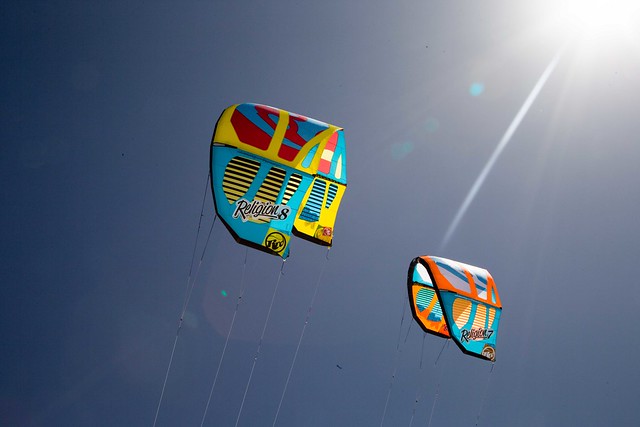I am curious about the shapes of some of these wave kites being released for 2014 and what affect they have on performance and choice in riding style.
The differences are sometimes enormous (and some more subtle) and although they might be visually noticeable to me, I am unsure about how they change riding characteristics.
On one hand we have the Reo and RRD Religion: They appear to be the most "open" in design.


Then half way towards being more typical "C", there is the Airush Wave:

All the way towards being the most "C" in shape are the upcoming North Dice:

Firstly a question about general shape. The reviews done on the Reo/Airush yield more similar results in power delivery than the RRD compared to the Reo, despite the Reo being more similar shaped to the RRD. Reviews of the RRD say that it generates far more power through turns than the Reo and Airush. Why is this? Are powerful turns more to do with a different build characteristic?
Next a question about the pulleys. The Reo seems to be the only one in the lineup without pulleys. I understand that this is supposed to offer a more direct feel with the kite. But one of the major strengths that reviewers have noted with the RRD is that it offers excellent direct feel, despite having pulleys. Another contradiction with the pulley issue lies in the speed and responsiveness that people have noticed in the Airush Wave. 6 pulleys (?), yet it was noted to be the most responsive and fast kite in the lineup in reviews and not at all "spongey".
If it's true that RRD and Airush have found a way to overcome these once despised pulley characteristics, does this then simplify the argument of pulleys vs no pulleys to a question of "Absorbtion of gusts and better depower" vs "No failure points" respectively? When surfing down the line, strapless, what would be a more desirable characteristic in a wave kite - absorbing gusts and smoothing out a ride with pulleys, or having no complicated pulleys on a bridle to f**k up your kite when you eat sh#t?
As for the North Dice, to me it just looks like a C kite with slightly different wing tips. How is this going to compare to the other kites when it is released?

